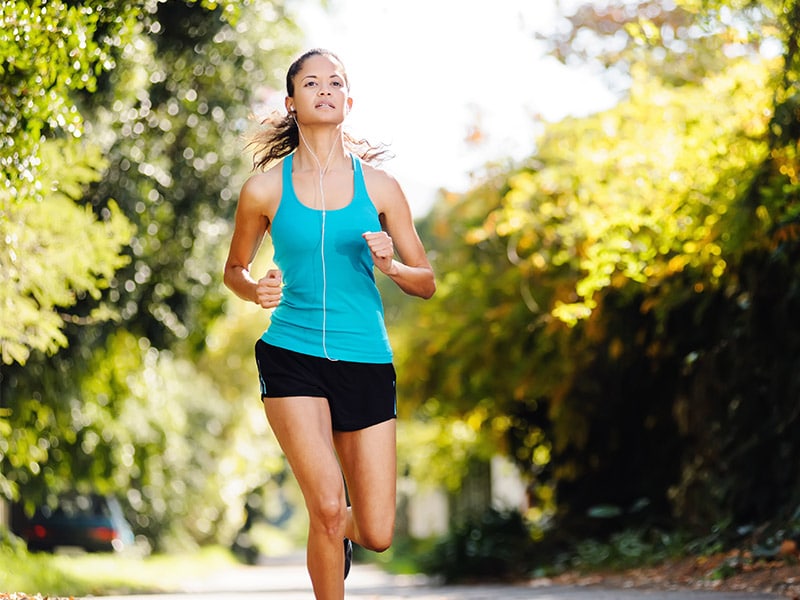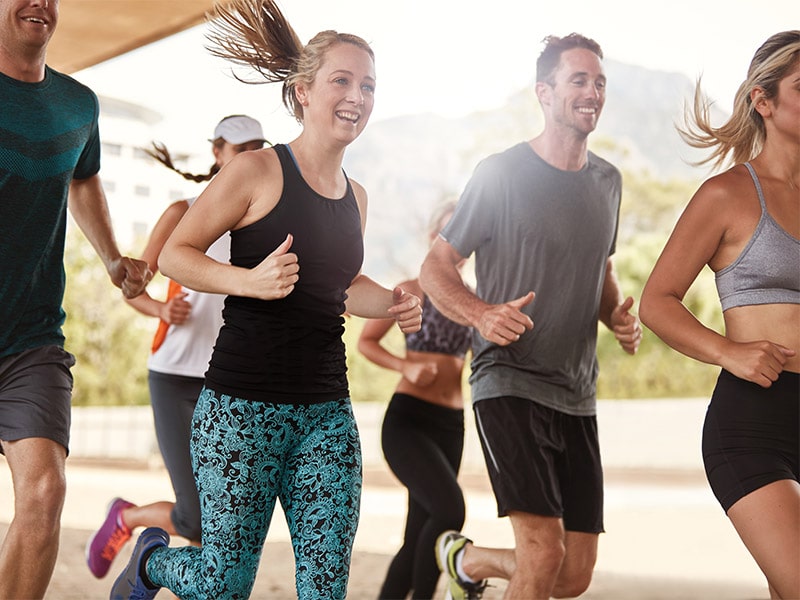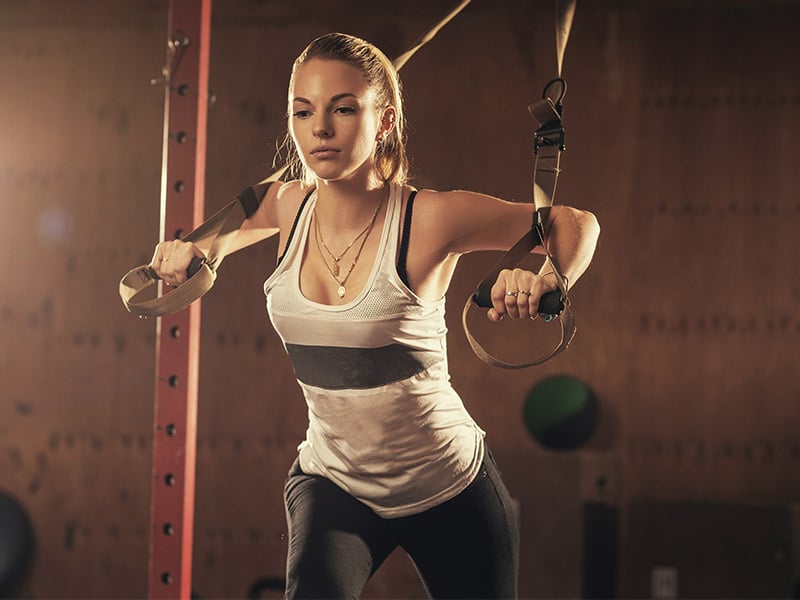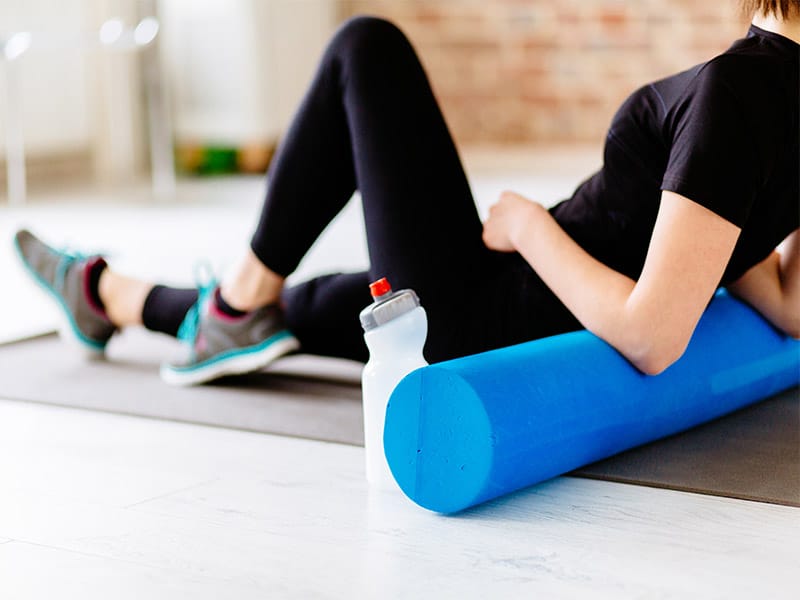Want to become a runner but don’t know where to start? Here are some expert tips to get you going.
#1 Set smart goals
“Ask yourself what you want to achieve from running,” says MÁIRE NIC AMHLAOIBH, RunFit Coach and Senior Physiotherapist at UFIT. “Do you want to cover a certain distance, or set a certain time for that distance? Or, do you want to achieve a personal goal like ‘me time’ or relaxation?”
While setting goals will keep you on track and motivated, they need to be clearly defined. For this, Máire recommends the SMART system: “Your goals need to be Specific, Measurable, Achievable, Realistic and Timed,” she says. “For example, someone who wants to run 10km in less than an hour would need to look at setting a SMART goal like this: ‘I would like to run a sub-60-minute 10km in the Standard Chartered event on 8 December 2018.’ This is very clear, and meets all the criteria for the SMART goals system. It makes planning a training programme to achieve this goal very easy, and keeps the runner motivated to stick to that plan.”

#2 Get the right running shoes
Different foot structures require different support, which means shoes are not one size fits all, explains orthopaedic surgeon DR BERNARD LEE of SportsIn Orthopaedic Clinic at Gleneagles Medical Centre. “If you have structural issues in your feet such as flat feet or a high-arched foot, you may require specialised shoes to protect you from injuries. The shape of the shoe (or the ‘last’, as it’s known) and the width also vary depending on the runner’s foot structure,” he says. “You’ll also need to consider what terrain you will be running on, as most running shoes are customised for different running surfaces. A podiatrist or good shoe fitter can help you find the right shoe for your feet.”
Dr Lee also points out that if you start running a lot, it’s a good idea to change your shoes frequently, as they may lose their cushioning effects with increased mileage.
#3 Don’t run everyday
Many new runners are under the impression that they have to run every day, but, in fact, it’s quite the opposite. Dr Lee says that a day or two of rest after a long-distance run will allow minor injuries to heal. Undertaking another bout of heavy exercise without a period of rest can cause permanent damage, he explains. “Small, stacked injuries may result in severe injuries in the long run. Remember that flexibility and rest are important in reducing the chances of getting repetitive stress injuries in our tendons, such as Achilles tendinitis.”
Máire recommends starting out by running three times a week on alternating days. “This allows enough time for tissues to recover and adapt to training loads, and prevents injuries. From there, a new runner can build gradually by adding in a fourth training day every second week,” she says.
However, if pain persists despite a period of rest, Dr Lee says it may signify a more permanent injury rather than the regular muscle or tendon strains that you can get after intense exercise. “A specialist’s assessment of your persistent symptoms of pain may be helpful in diagnosing more serious problems such as tears in your cartilage, tendons or menisci,” he says. “Occasionally, you may even get significant bruising in the bones of your knee joint, which may require a longer period of rest in order for it to heal. You may also have some underlying, undiagnosed issue that is predisposing you to injury when you run.”
While rehabilitation with a physiotherapist can often facilitate your body’s healing and reconditioning, Dr Lee adds that, for serious problems, “surgical intervention may be necessary to set you back on the path of recovery and your return to running.”
#4 Gradually increase your mileage
One very common mistake that new runners make is increasing their distance too soon. “Progressing too fast may predispose you to stress injuries,” says Dr Lee. “Always start slow, and build up your distance and pace.”
Máire agrees, pointing out that the biggest cause of injuries in runners, new and experienced alike, is overload, where the runner increases his or her training by too much mileage, too soon. She therefore suggests gradually increasing your weekly training mileage by 10 percent to avoid injury. “This is why you need to plan your training in advance of an event or race, in order to allow for this slow build,” she says. “As they say, ‘slow and steady wins the race’. It’s a marathon, not a sprint – you want to have a long career running, not a short one.”
#5 Join a running club or class
Not only does running with a group add a fun social aspect, but it can also make you more accountable, which, in turn, makes you more motivated to get off the couch and out the door. UFIT’s RunFit, for instance, helps people spark their passion for running, taking runners outside their comfort zones and mixing things up with different terrains and intervals to keep things interesting. The group often participates in races around Singapore and has also travelled to other parts of Asia for various runs.

“Joining a social running group is a healthy way to catch up with friends and an excellent way to make new friends and get to know a new country,” says Máire. “You can meet like-minded people who share the same goal of wanting to get fitter, healthier and faster, and it also offers some healthy competition.”
#6 Cross train
“Running is a great form of exercise for our bodies for many reasons,” says Máire. “It’s the most effective form of cardio, and it tones our body, improves our mood and increases bone density. But, it is a high-impact exercise, which can be challenging and tough on our bodies.”
Running is also very repetitive. “When you think about it, we turn our legs over 170 to 180 times per minute when running, so, for a 40-minute run, we are repeating the same movement 6,800 to 7,200 times. This repetition can incur strain injuries, and the best way to avoid these injuries while starting out is cross training on a non-running day.”

Cross training can mean any other form of exercise, preferably a lower impact exercise that can carry over the same benefits as running – for example, swimming or cycling. Máire also advises doing low-impact core training exercises such as Pilates and suspension cable training. “The core is very involved in running and is the main system keeping the torso upright and the pelvis and hips stable throughout the run; it’s vital for correct transfer of load from the lower body to the upper body – without a strong, stable core, a new runner will most likely experience injuries as they increase their training,” she says.
The do’s and don’ts of injury prevention
“If you have an existing injury, DO allow it to heal first before you start running, or the compensation from other parts of your body may result in injuries to other areas,” advises Dr Lee.
If you have pre-existing medical or joint problems, DON’T take up running until you’ve consulted a doctor, says Dr Lee. “This is particularly important if you’ve previously had irregular heartbeats or heart problems. Also, DO consult a doctor if someone in your family has previously had a serious heart problem when they were young.”
While flexibility ensures that your body can take the movement and stresses applied to it while running, it’s important that you DON’T overstretch, says Dr Lee. “Avoid doing too much stretching and flexibility exercises just before you start your exercise, as it can actually predispose you to injuries.”

DO think about different running surfaces when you run. “Hard concrete will transmit more force into your ankles, knees and hips compared to softer running surfaces,” says Dr Lee. “This is important if you already have existing joint problems.”
DO invest in a foam roller and use it daily, says Máire. “As a new runner, this will be your new best friend! Due to the repetitive nature of running, your muscles will start to get tight due to fascia tightness, which can eventually lead to joint pain, or general aches and pains.” Foam rolling after long runs can help soothe tight fascia, increase circulation and help improve range of motion.
Different running styles stress different parts of the body. So, if you decide to change your running style, DO gradually make the change so that your body can adjust to the new stresses placed upon it, says Dr Lee. “Otherwise, you may predispose yourself to bony stress injuries or other tendon issues.”
Directory
Gleneagles Hospital 6A Napier Road 8799 7767 (WhatsApp) | gleneagles.com.sg
UFIT ufit.com.sg
Like this? Read more in our Health & Fitness section:
Top personal trainers in Singapore
Depression can affect anyone
This article first appeared in the October 2018 edition of Expat Living. You can purchase a copy or subscribe so you never miss an issue!





